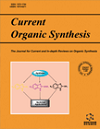
Full text loading...
We use cookies to track usage and preferences.I Understand
The reaction between 4-hydroxy-3,5-dimethoxyenzaldehyde and 2-ni-troaniline has been discovered, and the final product has been identified such as 2-6-dimethoxy-4-((2-nitrophenylimin)methyl)phenol (C1).
X-ray diffraction examination performed on a single crystal provided conclusive evidence regarding the structure. Crystallography reveals that the two molecules A and B that were enclosed within the asymmetric unit are structurally distinct from one another. C-H·O, N-H·O, and O-H·O bonding is primarily responsible for the crystal packing stability. H-O and off-set stacking interactions also contribute to the crystal packing's overall stability.
To do further research into the intermolecular interactions, the Hirshfeld surface analysis technique is utilized. It is possible to determine the partiality of the interatomic contacts to create crystal packing interactions by computing the improvement ratio for those contacts. In addition, computational research is carried out with the B3LYP/6-31G(d,p) model to determine the amount of energy that is required for molecular pairs to interact.
The study concluded the roles those different kinds of interaction energy play in maintaining the stability of the molecular pair.

Article metrics loading...

Full text loading...
References


Data & Media loading...

